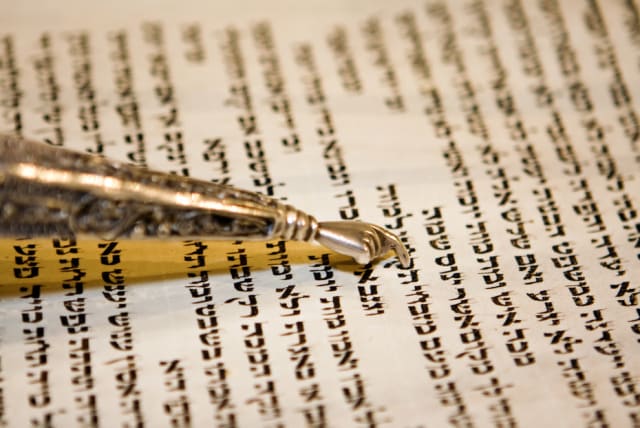Understanding the different rulings of the Sephardim and Ashkenazim in Halacha

The Torah passages and Israel's holidays are full of important messages that are relevant and empower our day-today lives. Rabbi Shai Tahan, head of the Sha'arei Ezra community and head of the Arzi HaLebanon teaching house, opens the gates for us to understand these messages, from their source, in a clear way. This week: Understanding the different rulings of the Sephardim and Ashkenazim in Halacha
Coming off the exalted Yom Tov of Shavuot, which commemorates the special day of receiving the holy Torah in Mt. Sinai from Hashem; one might come to ponder how the Torah branched off from one single unifying text to rulings so different as seen between Ashkenazim and Sephardim.
After our nation was exiled from its land, we were scattered to different places in the world. Some were exiled to Europe while others to Spain and the countries in the Middle East. The distance between the places had a great impact on their culture, language, genetics, food, and nuances of prayer.
For the last 1,000 years the Jewish people have, for the most part, been divided into two main groups: Ashkenazi and Sephardi. Contemporary Ashkenazim are European Jews and descendants of Yiddish-speaking Jews. Sephardim originate in the Iberian Peninsula and the Arabic lands. Although in this generation, those differences are rapidly fading as Ashkenazim and Sephardim mostly live together and their children go to the same schools. Many even marry each other, having children that are Sephardi from one side and Ashkenazi from the other.
One of the differences between the two groups which is still very relevant today is the way each follows their halacha.
Many of those differences developed due to the Psakim of the Rabbis which they follow, mostly the Shulchan Aruch and the Rema (though there are many more differences as well, but that is beyond the scope of this article). The Sephardim follow the rulings of Rabbi Yosef Karo in the Shulchan Aruch, and Ashkenazim follow Rabbi Moshe Isserlish in the Rema.
Let’s first try to understand how each of those two giants arrived at their respective psakim.
When one learns Gemara, he would usually begin learning the words of the text with the interpretation of Rashi, as it is almost impossible to understand the Gemara without the guidance of Rashi. After learning the words of Rashi, one usually continues with learning the Tosfot and other Rishonim like the Rosh, Rif, Rambam, Rashba, Ramban and others. The question one needs to ask is whether those Rishonim wrote their rulings L’ehalacha or did they just write an interpretation to the Gmara but didn’t mean that it should be the way one should rule as Halacha Le’maase.
Rav Moshe Feinstein (אגרות משה אה״ע ח״ד סימן פג אות א’) says that the Shulchan Aruch and the Rema argued over those points, as the Shulchan Aruch understood that most of the Rishonim didn’t write a clear Halacha since their main objective was to interpret the Gemara by asking questions on the Gemara’s difficulties and answering them, with the exception of three Rishonim, whose main objective was to give a clear, definitive ruling on each topic: the Rambam, the Rif and the Rosh. Therefore, the Shulchan Aruch ruled according to those three Rishonim over others. The Rema, on the other hand, felt that although all other Rishonim wrote many questions and answers to reconcile the difficulties of the Gemara, but those were not done without a Halachic purpose; rather those answers were geared towards Halacha, and therefore they can be counted that way as well.
As we see, the Shulchan Aruch restricted his ruling to only three poskim, while the Rema on the other hand saw more widely to include all Poskim as well. This system seemed to change later in history, as the Psak of the later Sephardi Poskim differ from their Ashkenazi contemporaries on this very point.
The Ben Ish Chai (בהקדמה לרב פעלים) writes that the Ashkenazi Poskim way is to look only at what the earlier Poskim, the Rishonim, wrote without opening the works of contemporary Poskim, implying that the Sephardi Poskim did search in many contemporary books to see if they can find something which they didn’t think of in order to apply it to their ruling.
Another very basic difference in the Psak is based on the Machloket between Pshat and Kabbala.
The Bet Yosef wrote (סימן קמא) that the Zohar overrides the ruling of the Poskim: ״לא שבקינן דברי הזוהר מפני דברי הפוסקים״ on the contrary, the Rema argued that we follow the Poskim over the Zohar: ״אין לזוז מדברי הפוסקים אף אם היו דברי הזוהר חולקים עליהם. כן נראה לי דלא כבית יוסף".
Later poskim followed this principle as well. The Mishna Berura (סימן כח, ס״ָק מב) who is the main Posek of the previous generation for the Ashkenazim, wrote to follow the Gemara and the Poskim over the Zohar and Kabbala. Contrary to that, the Kaf Hachayim a late Sefaradi Posek, wrote (סימן כה, ס״ק עה) that the Sefaradi approach is the way the Bet Yosef stated (see above), that Le’halacha we go with the Zohar’s ruling. Since the Sephardim always follow the Shulchan Aruch, in this very case it isn’t any different, and one must follow his Psak that Kabbala overrides the Pshat and all other Poskim. Moreover, even if the Bet Yosef himself says differently than the Kabbala, Sephardim must follow the Kabbala.
This article was written in cooperation with Shuva Israel
Jerusalem Post Store
`; document.getElementById("linkPremium").innerHTML = cont; var divWithLink = document.getElementById("premium-link"); if (divWithLink !== null && divWithLink !== 'undefined') { divWithLink.style.border = "solid 1px #cb0f3e"; divWithLink.style.textAlign = "center"; divWithLink.style.marginBottom = "15px"; divWithLink.style.marginTop = "15px"; divWithLink.style.width = "100%"; divWithLink.style.backgroundColor = "#122952"; divWithLink.style.color = "#ffffff"; divWithLink.style.lineHeight = "1.5"; } } (function (v, i) { });
